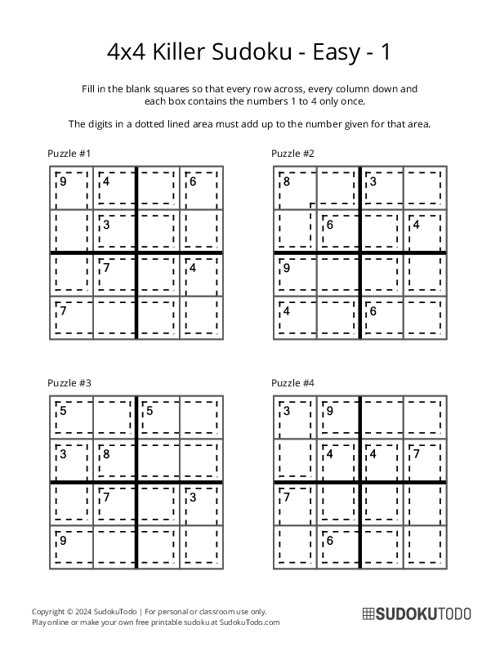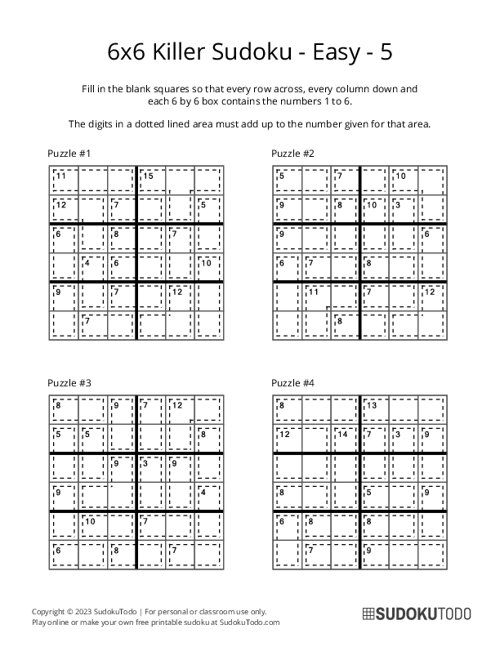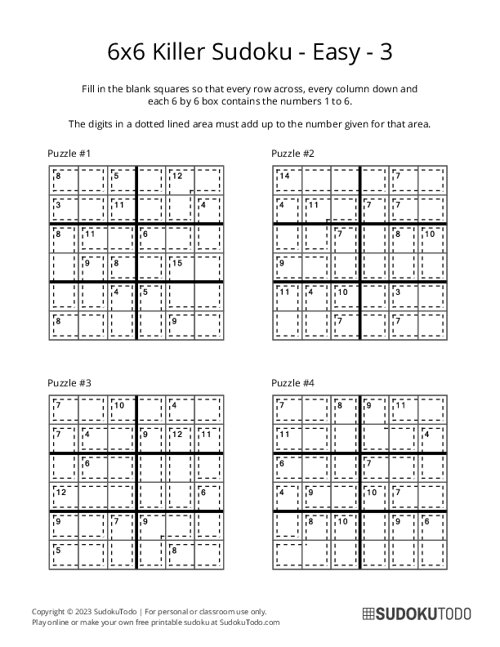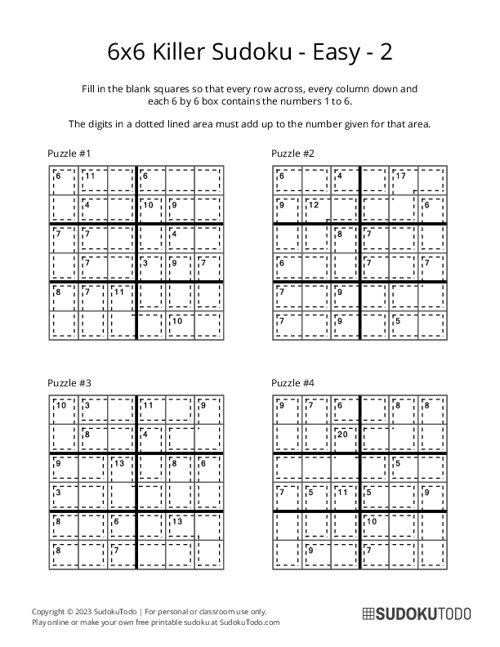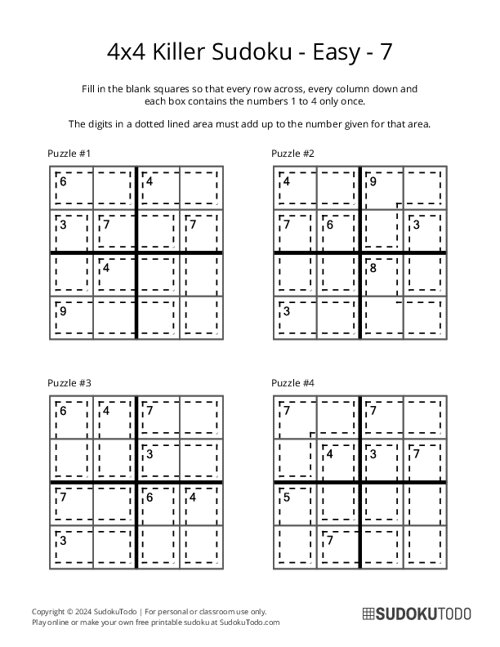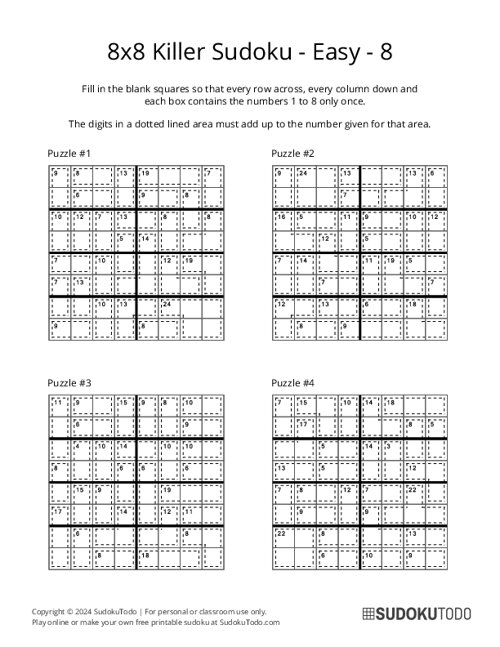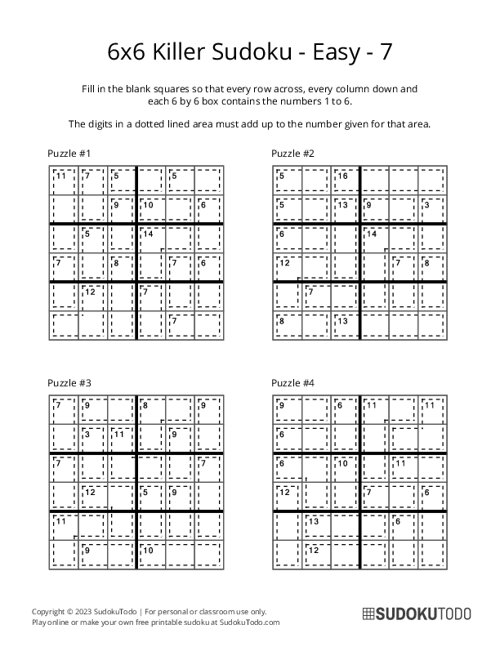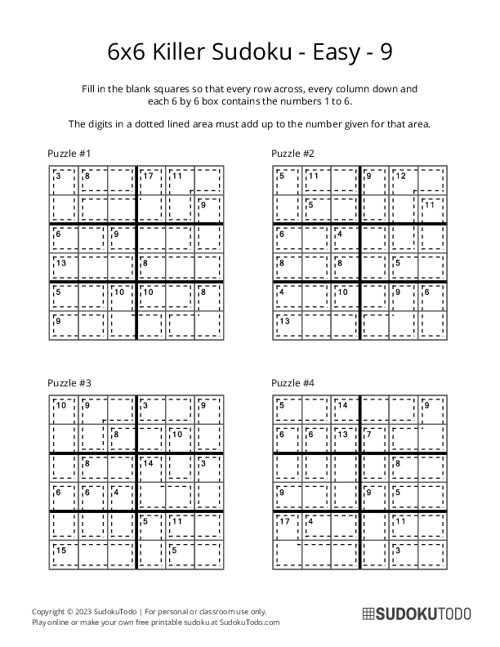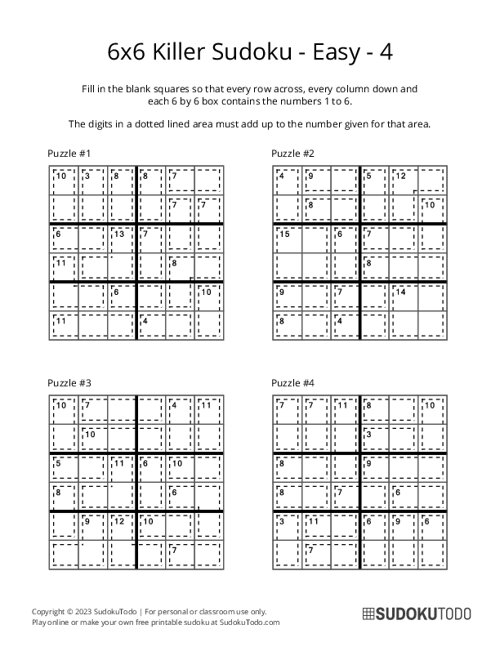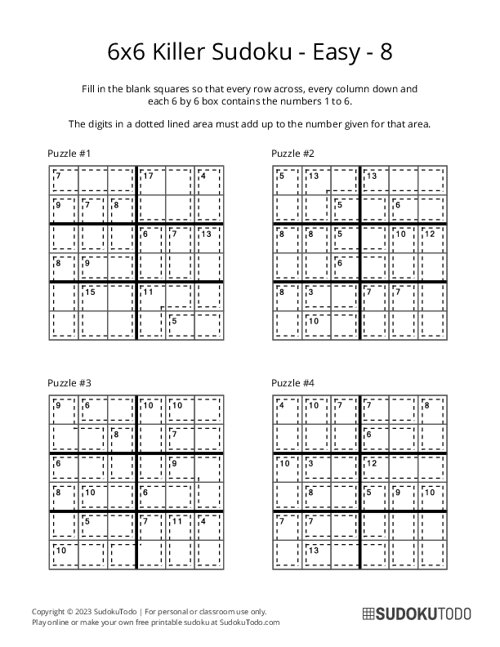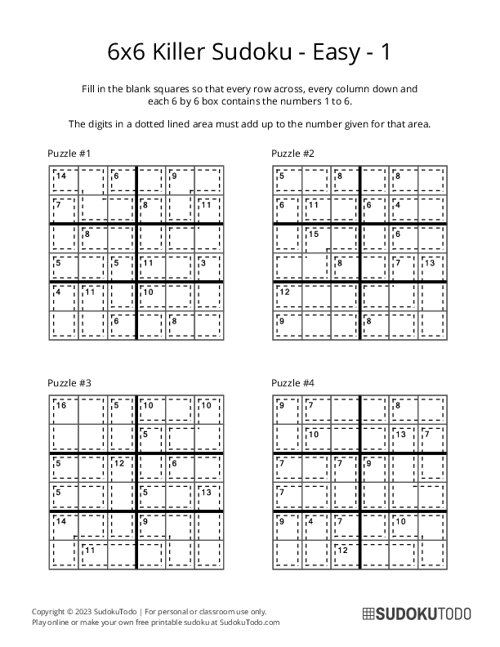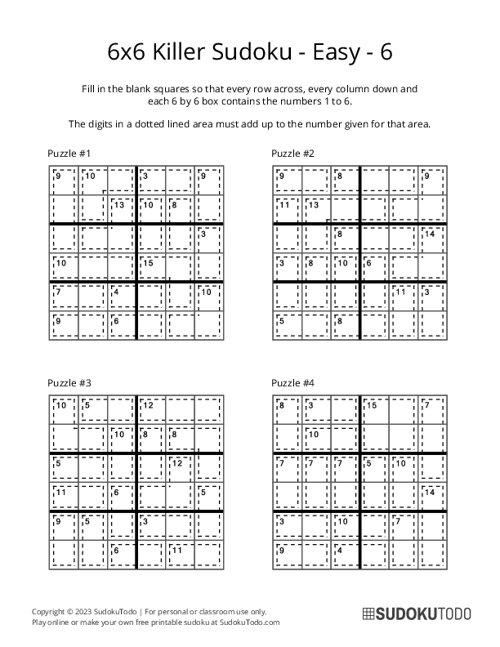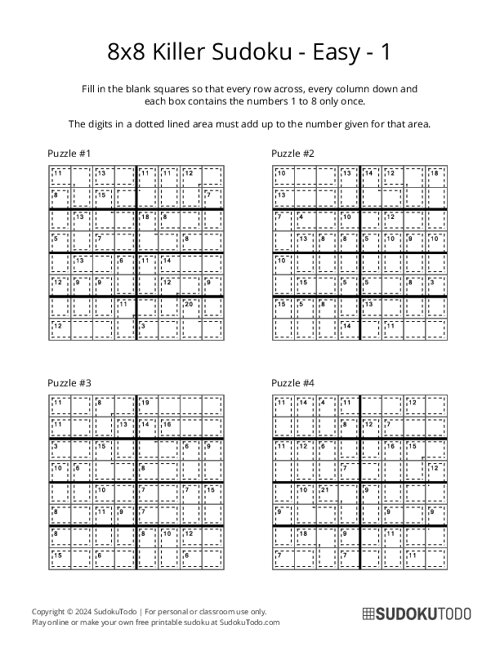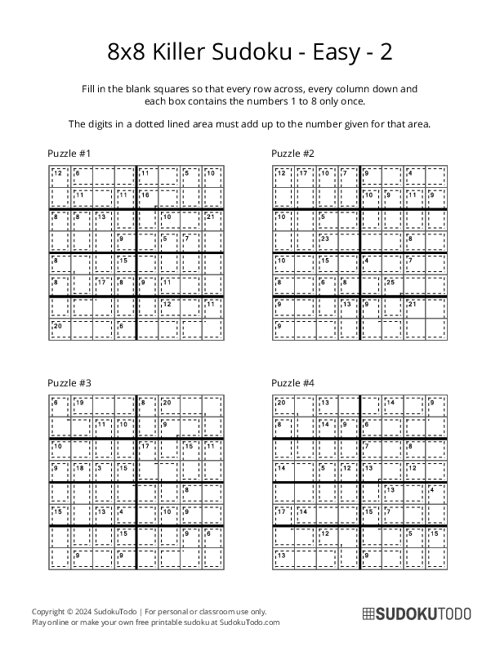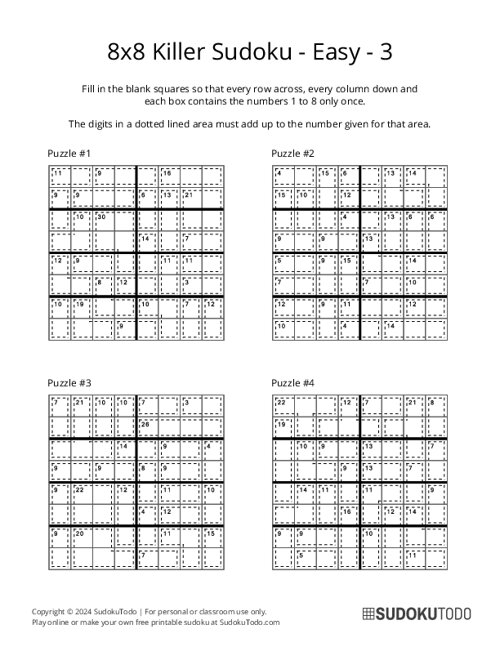Printable Sudoku
- Alphabet
- Battleships
- Binary
- Bridges / Hashi
- Chain Sudoku
- Consecutive
- Cross Sudoku
- Flower Sudoku
- Frame Sudoku
- Futoshiki
- Galaxies
- Greater Than
- Hitori
- Jigsaw Sudoku
- Kakuro
- KenKen
- Killer Sudoku
- Kropki Sudoku
- Little Killer
- Magic Squares
- Nonogram
- Odd Even Sudoku
- Outside Sudoku
- Rossini Sudoku
- Samurai Sudoku
- Sandwich
- Skyscraper
- Slitherlink
- Sohei Sudoku
- Star Battle
- Sudoku
- Sudoku for Kids
- Sudoku Mine
- Sudoku XV
- Sujiken
- Tripledoku
- Tripod Sudoku
- Twodoku
- Vudoku
- Windmill
Special Variations
Play / Solve
- Home»
- Killer Sudoku
Killer Sudoku Puzzles
Free printable Killer Sudoku puzzles for adults and kids. These challenging number puzzles with varying difficulty levels can help improve your brainpower and logic skills. Download now and start solving!
Showing 1-15 of 26 records
Sort by:
4x4 Killer Sudoku - Easy - 1
6x6 Killer Sudoku - Easy - 5
6x6 Killer Sudoku - Easy - 3
6x6 Killer Sudoku - Easy - 2
4x4 Killer Sudoku - Easy - 7
8x8 Killer Sudoku - Easy - 8
6x6 Killer Sudoku - Easy - 7
6x6 Killer Sudoku - Easy - 9
6x6 Killer Sudoku - Easy - 4
6x6 Killer Sudoku - Easy - 8
6x6 Killer Sudoku - Easy - 1
6x6 Killer Sudoku - Easy - 6
8x8 Killer Sudoku - Easy - 1
8x8 Killer Sudoku - Easy - 2
8x8 Killer Sudoku - Easy - 3
About Killer Sudoku Puzzles
Killer Sudoku is like a regular Sudoku puzzle, but with an extra challenge. In regular Sudoku, you fill in the grid with numbers 1-9 so that each row, column, and 3x3 box has all the numbers.
In Killer Sudoku, you also have "cages." These are groups of cells that must add up to a specific number. For example, a cage with the number 12 might have 3 cells that add up to 12.
This extra rule makes Killer Sudoku more difficult and fun! You'll need to use logic and strategy to solve the puzzle, taking into account both the regular Sudoku rules and the cage sums.
Rules / How to Play
- Standard Sudoku Rules: Each row, column, and 3x3 sub-grid must contain all digits from 1 to 9 without repetition.
- Cages: The grid contains irregularly shaped groups of cells, known as cages, outlined with dotted lines. Each cage has a number in the top-left corner indicating the sum of the digits within that cage.
- No Repeats within Cages: Just like rows, columns, and sub-grids, cages also cannot contain repeated digits.
Solving Tips and Techniques:
- Use Cage Sums: Start by identifying cages with small or large sums since these provide limited combinations of numbers. For example, a cage with a sum of 3 in two cells can only be {1, 2}. A single-cell cage gives the value directly.
- Cross-Summing: To compare overlapping cages, look at the sums of the numbers in their rows, columns, or subgrids. If you know the sum of some numbers, subtract that sum from 45 (which is the total for each row, column, or subgrid) to find the missing values.
- Restricted Combinations: Use known combinations for specific sums. For example, a two-cell cage with a sum of 17 can only be {8, 9}. A three-cell cage summing to 6 can only be {1, 2, 3}.
- Elimination: Eliminate possibilities by applying standard Sudoku logic. For example, if a 7 is placed in a column, it cannot appear elsewhere in that column.
- Cage Overlap: Look for cages that overlap in rows, columns, or subgrids. Use the cage sums to deduce the possible digits for the overlapping cells.
- Use pencil marks: Lightly pencil in possible numbers in each cell to help you visualize the possibilities.
Killer Sudoku requires patience and a systematic approach. By combining these techniques and using logical reasoning, you can solve even the most challenging Killer Sudoku puzzles.
